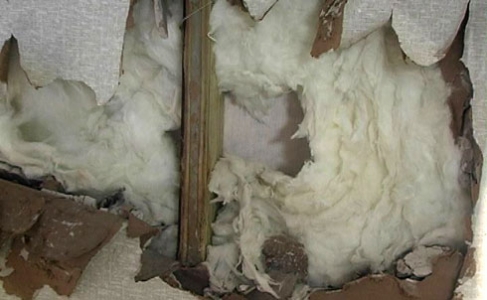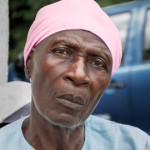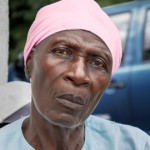Shock-Doctrine Schooling of Haitian Children by Clinton and IDB
Editorial Comment
Reconstruction of Haiti’s schools by the Clinton Foundation and the Inter-American Development Bank is exposed in two articles as a textbook case of the shock doctrine,with the United States trying to house schoolchildren in substandard formaldehyde-laced Hurricane Katrina trailers.
Dady Chery, Editor
Haiti Chery
By Jesse Hagopian, Isabel Macdonald, Isabeau Doucet
Truthout | The Nation | Canadian Centre for Investigative Reporting
Shock-doctrine schooling in Haiti: Neoliberalism off the Richter scale
By Jesse Hagopian
Truthout
Two days before the earthquake, my one-year-old son and I accompanied my wife to Haiti for an HIV training course she was to conduct. Two days after surviving the quake, we drove into the center of Port-au-Prince from the Pétionville district, where we had been staying, and passed a school that had completely collapsed.
I remember successfully convincing myself as we drove by that not one student or teacher was struck by the chunks of drab-gray cinderblock that lay scattered in the courtyard. As a Seattle public schools teacher myself, I could not allow the image of being trapped with my students under the debris of the school to enter my thoughts and I managed to become certain that no one had been in the building when it collapsed. After spending the prior two days wrapping countless children’s bloodied appendages with bed sheets, I needed the peace of mind that these students lived.
But even teachers get the answers wrong. Upon returning to Seattle and reviewing the statistics, it seems increasingly likely that my confidence in the well-being of that school community was more coping mechanism than fact.
The Haitian government estimates that at least 38,000 students and more than 1,300 teachers and other education personnel died in the earthquake. As UNICEF reported,
“80 percent of schools west of Port-au-Prince were destroyed or severely damaged in the earthquake and 35 to 40 percent were destroyed in the southeast. This means that as many as 5,000 schools were destroyed and up to 2.9 million children here are being deprived of the right to education.”
In the earthquake’s aftermath, Haiti’s Education Minister Joel Jean-Pierre declared “the total collapse of the Haitian education system.”
The truth, however, is that the seismic activity of free-market principles had shattered the education system in Haiti long before January 12, 2010.
Some 90 percent of schools in Haiti are private schools and, according to UN statistics, primary school tuition can often represent 40 percent of a poor family’s income – forcing parents, at the very least, to choose which of their children they’ll send to school. Only about two-thirds of Haiti’s kids were enrolled in primary school before the earthquake and less than a third reach sixth grade.
Secondary schools enrolled only one in five eligible-age children, which is one reason the illiteracy rate in Haiti is over half – 57.24 percent. Poverty and lack of access to education has led to mass child servitude, known as the restavèk system, with an estimated 225,000 Haitian youth living in a state of bondage.
Read: A Valentine for My Restavek Mothers and the Stolen Children of Haiti
For most people, Haiti’s broken school system – now literally buried under tons of rubble – is an incomprehensible horror. But for a few, the earthquake created a big break for business.
“There’s a real opportunity here, I can taste it. That is why I’ve flown [to Haiti] so many times.”
Meet Paul Vallas. The 58-year-old Vallas is the former CEO of the Chicago and Philadelphia public school systems and was hired in the aftermath of Hurricane Katrina as superintendent of the Recovery School District of Louisiana that oversaw the transformation of the New Orleans school system.
Vallas’ legacy in these cities of privatizing schools, reducing public accountability and undermining unions made him a shoo-in to take charge of the Inter-American Development Bank’s (IDB) education initiative in Haiti.
To truly appreciate Vallas’ epic dedication to letting the free market rip Haitian society apart, you have to consider the fact that he had to overcome a severe fear of flying to deliver the laissez-faire gospel to Haiti.
Vallas’ disaster-as-opportunity comment cited above was clearly cribbed from US Education Secretary Arne Duncan, who indirectly praised Vallas’ work in New Orleans, saying,
“I think the best thing that happened to the education system in New Orleans was Hurricane Katrina.”
Duncan justified his statement by arguing that the destruction of the storm allowed education reformers to start from scratch and rebuild the school system better than before. However, as Naomi Klein, author of “The Shock Doctrine: The Rise of Disaster Capitalism,” pointed out about the New Orleans school system:
In sharp contrast to the glacial pace with which the levees were repaired and the electricity grid brought back online, the auctioning-off of New Orleans’ school system took place with military speed and precision. Within 19 months, with most of the city’s poor residents still in exile, New Orleans’ public school system had been almost completely replaced by privately run charter schools … New Orleans teachers used to be represented by a strong union; now, the union’s contract had been shredded and its 4,700 members had all been fired.
It should be apparent, then, that with Vallas at the helm of redesigning the Haitian school system, no child will be safe from an off-the-Richter-scale neoliberal quake.
Vallas’ scheme for Haitian education centers on maintaining a system in which 90 percent of schools are private – with the one modification that the Haitian government finance these private schools, based on the charter school model he delivered to New Orleans.
To Vallas, education is a simple matter that shouldn’t be made more complicated by considerations about students being multifaceted individuals with different learning styles, backgrounds and passions. Vallas summarized his educational philosophy at a May 2010 symposium on schools in Haiti:
Education is not a complicated business: you diversify the management models [read: move away from public management toward private management], you expand your pool of qualified teachers, you develop superior curricular instructional models with the training that goes with it, you come up with basic classroom modernization designs that can be implemented regardless of the condition of the facility and you create a delivery system to go and implement these things – and believe me this is not rocket science.
Given that the IDB’s development strategy in Haiti is dedicated to increasing low-wage jobs in garment-production sweatshops, it shouldn’t come as a surprise that Vallas was hired to implement an education plan that seeks to reduce schools to a “delivery system” assembly line, where the purpose of education becomes the systematic and linear production of widget students.
The IDB’s proposed five-year, $4.2 billion plan for the remaking of the Haitian education system could be described as the “Trojan school”: Using the promise of the day when there is reduced tuition in the bulk of Haitian schools as a means to permanently enshrine a private schooling system subsidized by the government. As the IDB explains of its proposal:
Under the reform, most Haitian schools will become publicly funded institutions, foregoing or drastically reducing tuition charges. The government will pay teacher salaries for schools participating in the plan.
But here’s the catch:
To remain in the new system, schools will have to adopt a national education curriculum.
Eliminating tuition charges in Haiti is an essential prerequisite to providing education to all of Haiti’s children. Yet, a year and a half after the IDB introduced its plan, there has been little progress in making schools free to all.
Moreover, a national standardized curriculum established by powerful interests is likely to obscure important lessons for Haiti’s youngsters.
For example, will this national course map, financed by the IDB, examine how US and Western foreign policy has, for generations, destabilized the Haitian government – from Thomas Jefferson’s refusal to recognize the newly established black republic at the turn of the 19th century for fear that it would encourage slave rebellions in the American South, through to the cables uncovered by WikiLeaks, revealing how the Obama administration manipulated the recent presidential election in Haiti?
Is this uniform curriculum more likely to include problem-posing lesson plans drawn from Paulo Freire’s “Pedagogy of the Oppressed” – or from the pre-packaged lessons that come shrink-wrapped with former DC Public Schools Chancellor Michelle Rhee’s curriculum-narrowing tests?
Vallas’ advocacy of a “drill-and-test” method for education should settle these questions, if there were ever any doubt.
But this approach to education is coming under increasing scrutiny in the US, as Stanford University Education Professor Linda Darling-Hammond said at the recent Save Our Schools rally in Washington, DC:
While many politicians talk of international test score comparisons, they rarely talk about what high-performing countries like Finland, Singapore and Canada actually do: They ensure that all children have housing, health care and food security. They fund their schools equitably … They organize their curriculum around problem-solving and critical thinking skills.
In this light, the struggle in Haiti for an education that develops the whole child must be coupled with broader struggles – for permanent housing for the hundreds of thousands still in tent camps, for a sewage and water system to stem the spread of cholera and for an agricultural policy that supports Haitian farmers in domestic food production.
As the Secretary of the National Confederation of Haitian Educators, Lourdes Edith Delouis, put it, the union
“draws attention to the fact that 130 communal sections are devoid of public schools 33 of which have no school, noting that the construction of these schools is a necessity and it must be accompanied by the offer of basic public services, such as water, electricity, health care and recreation.”
Ignoring these broader considerations, Vallas is nonetheless proud of the IDB’s education initiative.
“The plan is very ambitious,” he said. “The funding goals may be too ambitious. But the bottom line is, if we achieve three-quarters or half of it, we’ll have a profound impact on the country.”
It would appear, however, that Vallas needs a remedial class in fractions – because the world’s governments, content with the morality of lowest common denominator, have delivered only a small portion of the money they pledged to help Haiti rebuild.
But that doesn’t keep the IDB from bragging about its work in rebuilding the school system in Haiti. According to a May 31 statement on the IDB web site:
Since January 2010, the IDB has financed the construction of 800 temporary classrooms in 57 school sites and the distribution of 100,000 backpacks with books and supplies for students. It has also provided financial support to 1,200 schools, enabling some 70,000 children to resume their lessons.
The IDB’s boasts about temporary classrooms and backpacks provide a powerful political science lesson for Haiti’s youth: None of the world’s governments care enough to give anywhere near what the schools need in aid.
The disregard for creating a quality school system in Haiti could not have been shown more forcefully than with Isabel Macdonald and Isabeau Doucet’s Nation magazine investigative report (below) on the Clinton Foundation’s first project in Haiti, a reconstruction effort in the city of Léogâne.
The reporters discovered that the Clinton Foundation provided Léogâne with trailers from Clayton Homes – the very company being sued in the US for providing the Federal Emergency Management Agency with formaldehyde-tainted trailers following Hurricane Katrina.
As Macdonald and Doucet reported, the trailers were to be used as classrooms – but they incubated mold rather than scholarship and were plagued with disturbing levels of formaldehyde:
As Judith Seide, a student in Lubert’s sixth-grade class, explained to the Nation, she and her classmates regularly suffer from painful headaches in their new Clinton Foundation classroom. Every day, she said, her “head hurts and I feel it spinning and have to stop moving, otherwise I’d fall.” Her vision goes dark, as is the case with her classmate Judel, who sometimes can’t open his eyes because, said Seide, “he’s allergic to the heat.” Their teacher regularly relocates the class outside into the shade of the trailer because the swelter inside is insufferable.
Two out of four of these classrooms provided by the Clinton Foundation couldn’t be used to the end of the school year due to temperatures frequently exceeding 100 degrees inside the trailers. As student Mondialie Cineas said,
“The class gets so hot. The kids get headaches. And we go to the teacher for him to give us painkillers.”
As it turns out, Vallas has been a strong proponent – both in New Orleans and Haiti – of using trailers as classrooms, arguing,
“There are ways to create a classroom learning environment that can be a superior learning environment, even if that classroom is in an inadequate building.”
Given that Bill Clinton is a close collaborator with the IDB, it’s unsurprising that his model for rebuilding schools in Haiti follows Vallas’ lesson plan.
Haiti and New Orleans have an inextricably linked history, including the 10,000 refugees that left Saint-Domingue (present-day Haiti) and arrived in New Orleans in 1809, doubling the population of the city. They brought with them the Creole culture and Vodou religion, elements of which persist in the bayou to this day.
But the nature of the relationship between these two cultures is currently being remade. From Vallas and charter schools to the Clayton Homes trailers, the US is unmistakably attempting to export its Hurricane Katrina response to Haiti and its schools – in a textbook case of Klein’s concept of the “shock doctrine” in which disaster capitalists seek to profit from calamity.
When the shock doctrine is applied to schooling, it has the effect of both profiteering off children and denying them access to the knowledge that could help them escape subjugation. As the French colonial governor of Martinique wrote to a French minister in Haiti in the late 1700s,
“The safety of the whites demands that we keep the Negroes in the most profound ignorance. I have reached the stage of believing firmly that one must treat the Negroes as one treats beasts.”
Governments the world over owe a debt to Haiti that is long past due – some from a history of direct colonial control or later economic subjugation and some from failing to honor pledges made in the aftermath of the earthquake. If these debts were repaid, that would be the basis for constructing a world-class education system.
The balance owed should be deposited directly with the Haitian government to build a public school system accountable to the country’s citizens, not private interests. Haitian schools must be built immediately, in permanent, earthquake-resistant, hurricane-safe, world-class facilities that are free for all to attend. In this vision for the country’s public schools, they would serve as a focal point for Haitian society, where clean water and free meals could be organized and distributed to families.
Finally, Haitian educators must be given the autonomy to develop curricula that matches the needs of their students and the world into which they will graduate – skills such as creativity, civic courage, leadership, teamwork and social responsibility, which will be needed to address the massive social challenges facing Haiti.
As we enter another school year, I hope teachers in trailers across Haiti are preparing lesson plans that engage students in a critical dialogue about Toussaint L’Ouverture, his Haitian slave revolution that overthrew Western colonialism and the lessons it offers for the US government’s current neocolonial control over the island nation today.
Haiti has a lot to teach. It is time the world sat up straight.
Jesse Hagopian is a public high school teacher in Seattle and a founding member of Social Equality Educators (SEE). He serves on the Board of Directors of Maha-Lilo – “Many Hands, Light Load” – a Haiti solidarity organization. Hagopian is a contributing author to the forthcoming book, “Education and Capitalism: Struggles for Learning and Liberation” (Haymarket Books). He can be reached at: hagopian.jesse@gmail.com
Inside Haiti’s “hurricane proof” shelters
By Isabel Macdonald and Isabeau Doucet
Canadian Centre for Investigative Reporting / The Nation
When Demosthene Lubert heard that Bill Clinton’s foundation was going to rebuild his collapsed school at the epicenter of Haiti’s January 12, 2010, earthquake, in the coastal city of Léogâne, the academic director thought he was “in paradise.”
The project was announced by Clinton as his foundation’s first contribution to the Interim Haiti Recovery Commission, which the former president co-chairs. The foundation described the project as “hurricane-proof…emergency shelters that can also serve as schools…to ensure the safety of vulnerable populations in high risk areas during the hurricane season,” while also providing Haitian schoolchildren “a decent place to learn” and creating local jobs. The facilities, according to the foundation, would be equipped with power generators, restrooms, water and sanitary storage. They became one of the IHRC’s first projects.
However, when Nation reporters visited the “hurricane-proof” shelters in June, six to eight months after they’d been installed, we found them to consist of twenty imported prefab trailers beset by a host of problems, from mold to sweltering heat to shoddy construction. Most disturbing, they were manufactured by the same company, Clayton Homes, that is being sued in the United States for providing the Federal Emergency Management Agency (FEMA) with formaldehyde-laced trailers in the wake of Hurricane Katrina. Air samples collected from twelve Haiti trailers detected worrying levels of this carcinogen in one, according to laboratory results obtained as part of a joint investigation by The Nation and The Nation Institute’s Investigative Fund.
Clayton Homes is owned by Berkshire Hathaway, the holding company run by Warren Buffett, one of the “notable” private–sector members of the Clinton Global Initiative, according to the initiative’s website. (“Members” are typically required to pay $20,000 a year to the charity, but foundation officials would not disclose whether Buffett had made such a donation.) Buffett was also a prominent Hillary Clinton supporter during the 2008 presidential race, and he co-hosted a fundraiser that brought in at least $1 million for her campaign.
By mid-June, two of the four schools where the Clinton Foundation classrooms were installed had prematurely ended classes for the summer because the temperature in the trailers frequently exceeded 100 degrees, and one had yet to open for lack of water and sanitation facilities.
As Judith Seide, a student in Lubert’s sixth-grade class, explained to The Nation, she and her classmates regularly suffer from painful headaches in their new Clinton Foundation classroom. Every day, she said, her “head hurts and I feel it spinning and have to stop moving, otherwise I’d fall.” Her vision goes dark, as is the case with her classmate Judel, who sometimes can’t open his eyes because, said Seide, “he’s allergic to the heat.” Their teacher regularly relocates the class outside into the shade of the trailer because the swelter inside is insufferable.
Sitting in the sixth-grade classroom, student Mondialie Cineas, who dreams of becoming a nurse, said that three times a week the teacher gives her and her classmates painkillers so that they can make it through the school day. “At noon, the class gets so hot, kids get headaches,” the 12-year-old said, wiping beads of sweat from her brow. She is worried because “the kids feel sick, can’t work, can’t advance to succeed.”
Word about the students’ headaches has made it all the way to the Léogâne mayor’s office, but like the students, their teachers and parents, Mayor Santos Alexis chalked it up to the intense heat inside the trailers.
But headaches were not the only health problems students, staff and parents at the Institut Haitiano-Caribbean (INHAC) told us they’ve suffered from since the inauguration of the classrooms. Innocent Sylvain, a shy janitor who looks much older than his 41 years, spends more time than anyone in the new trailer classrooms, with the inglorious task of mopping up the water that leaks through the doors and windows each time it rains. He has felt a burning sensation in his eyes ever since he began working long hours in the trailers. One of his eyes is completely bloodshot, and he said, “They itch and burn.” He’d previously been sensitive to eye irritation, but he says he’s had worse “problems since the month of January”—when the schoolrooms opened their doors.
UPDATE In response to the original article that appeared on thenation.com and CCIR Investigates, a Clinton Foundation representative in a July 12th AP article agreed to look into and fix any “structural deficiencies” with their trailers in Haiti. For more on this read Isabel Macdonald’s updated blog on the Investigative Fund site.
Isabeau Doucet is a freelance journalist working in Port-au Prince, Haiti, where she has written for Haiti Liberte and worked for Al Jazeera. Isabel Macdonald is a freelance journalist and former communications director of the media watch group Fairness Fairness and Accuracy in Reporting. This article was reported in partnership with The Investigative Fund at The Nation Institute, with additional support from the Canadian Centre for Investigative Reporting. A version of this story first appeared on thenation.com.
Sources: Truthout | The Nation | CCIR (+video) | Haiti Chery








Comments
Shock-Doctrine Schooling of Haitian Children by Clinton and IDB — No Comments